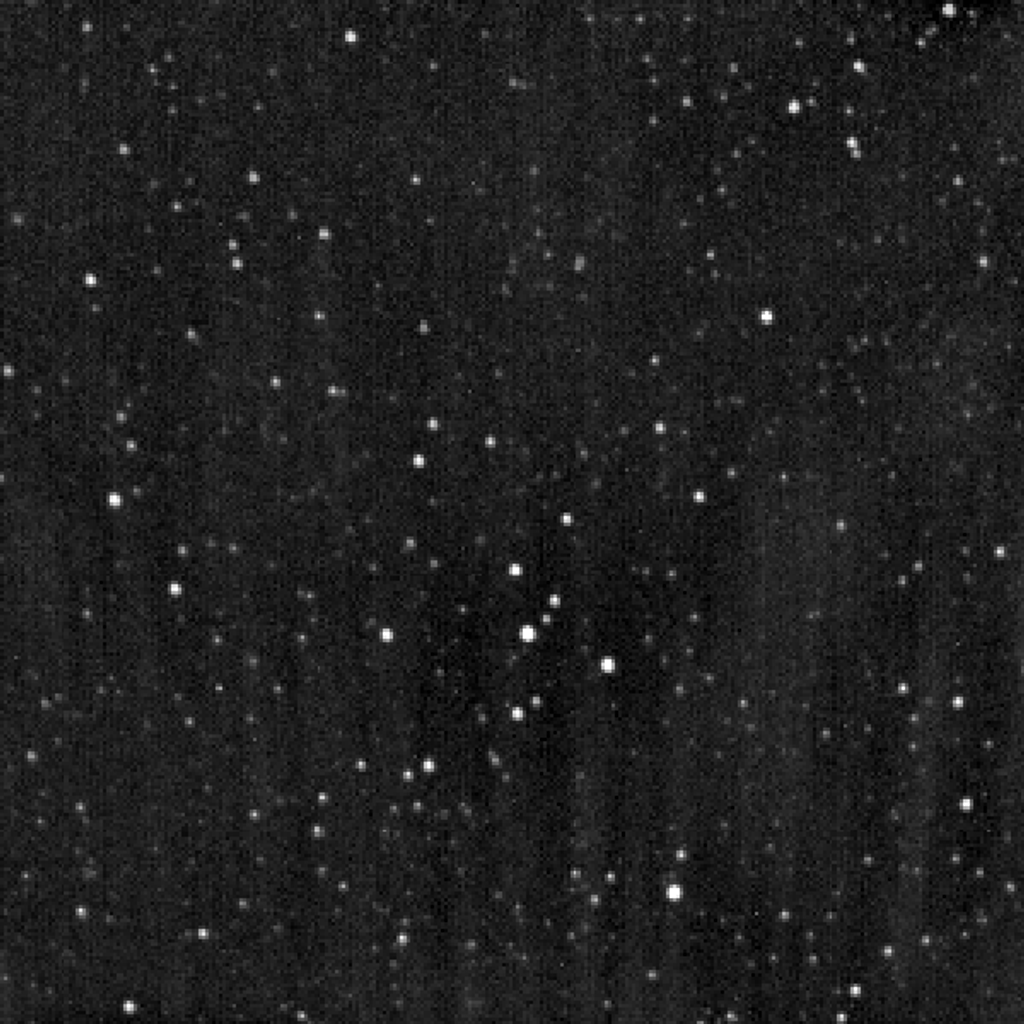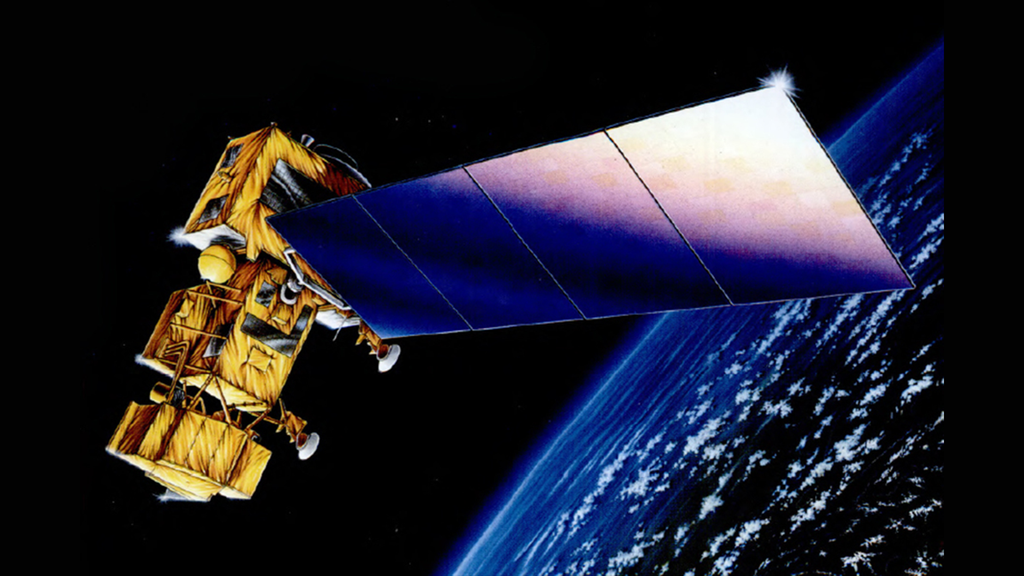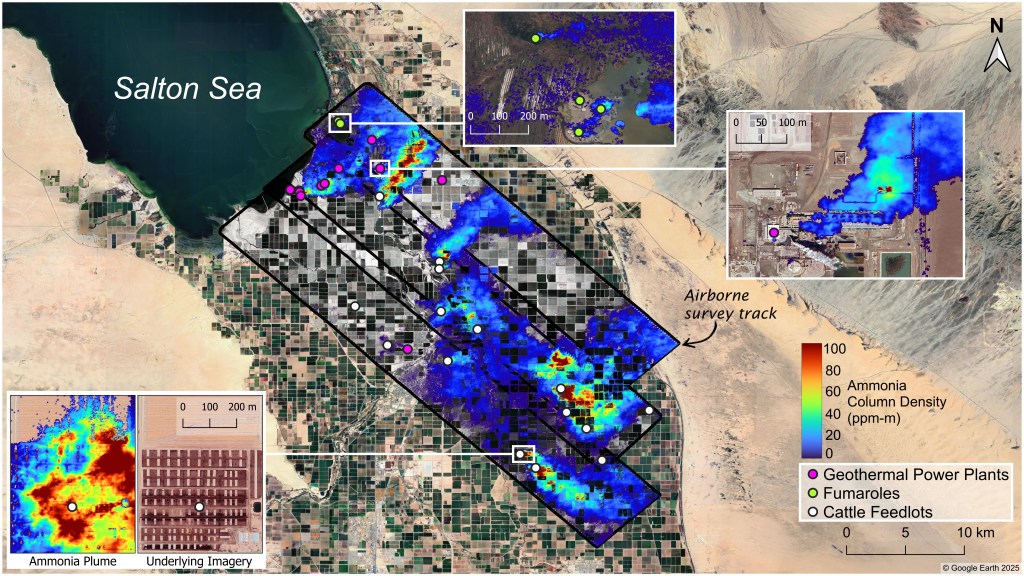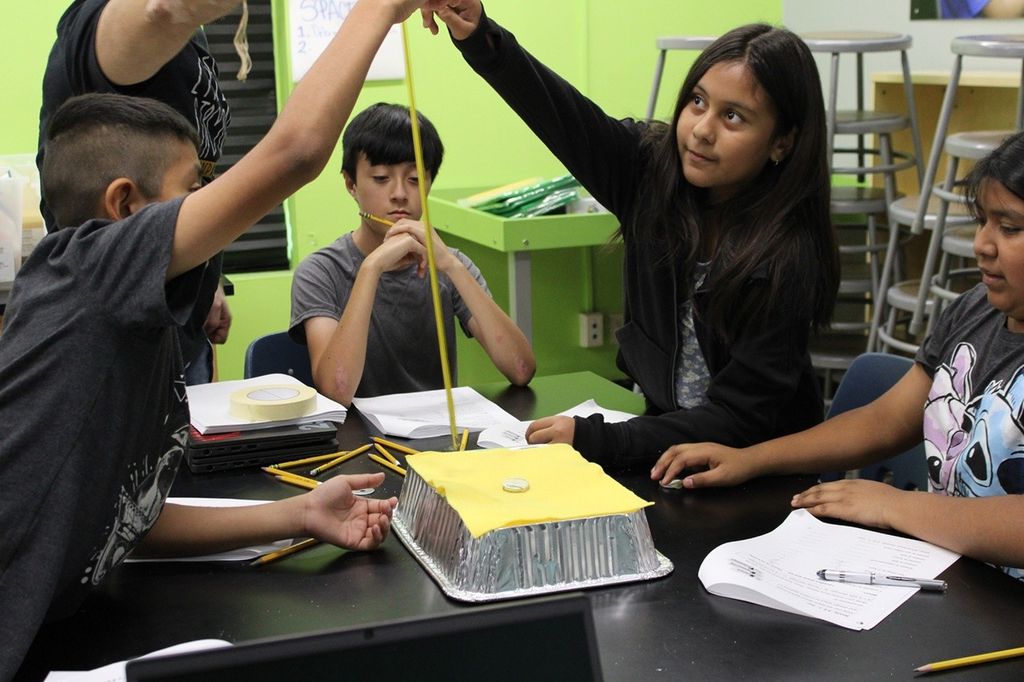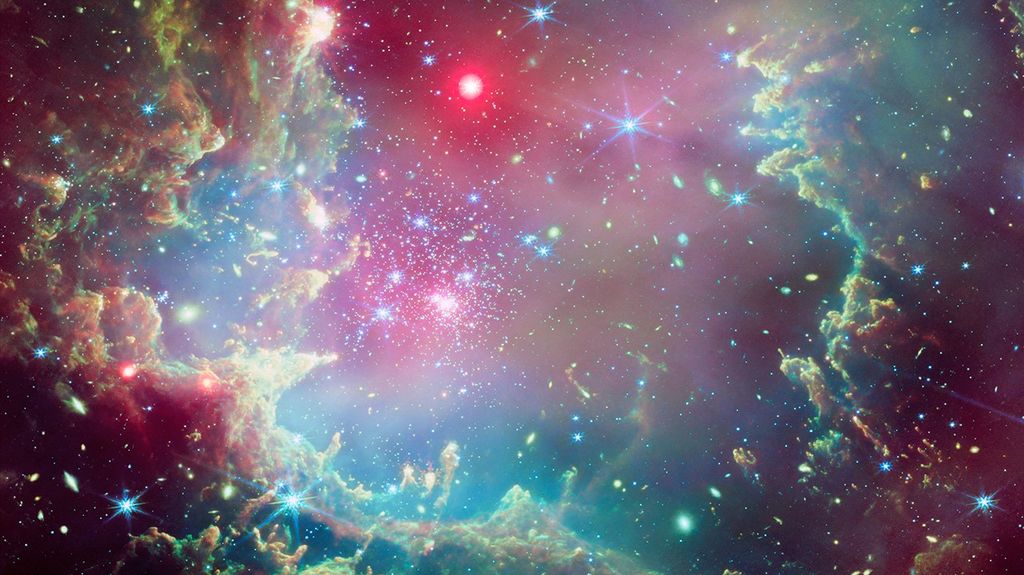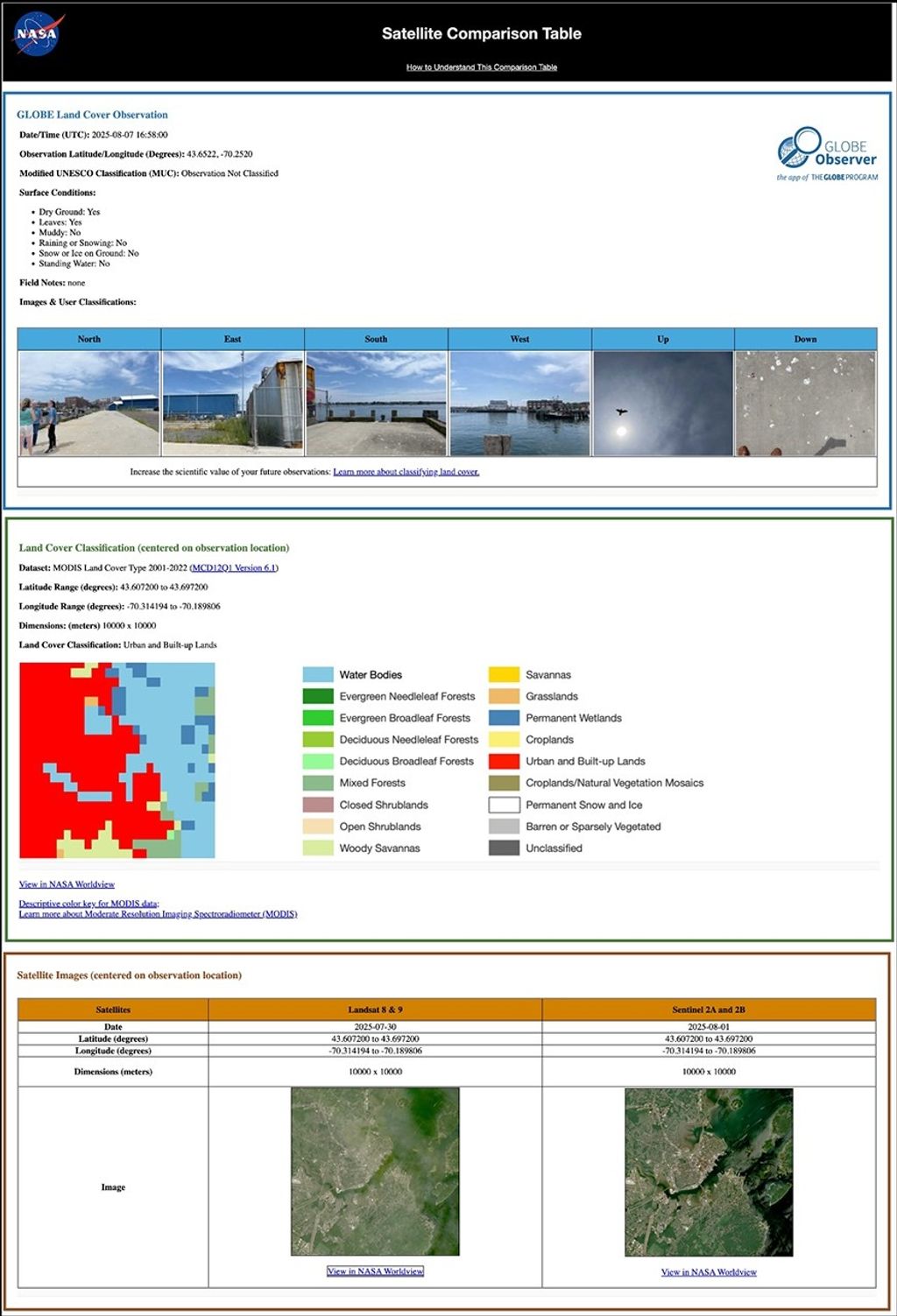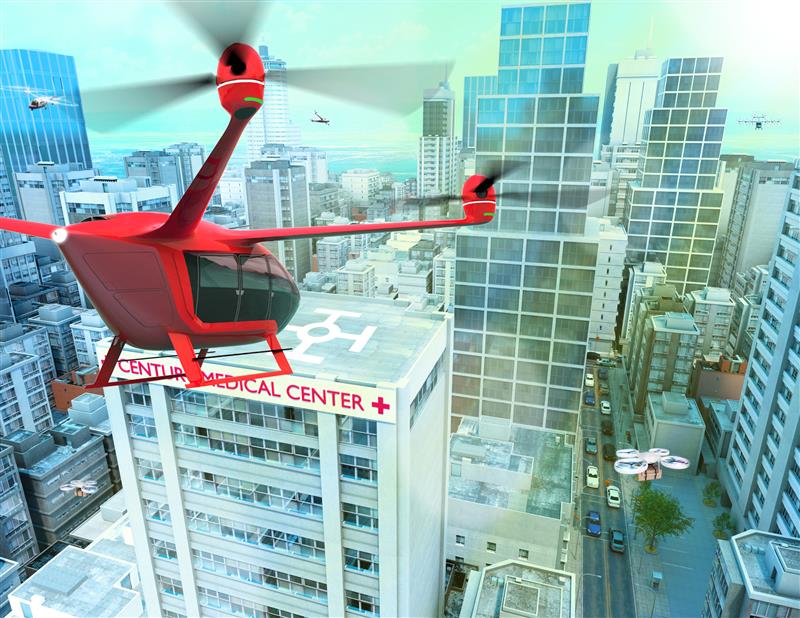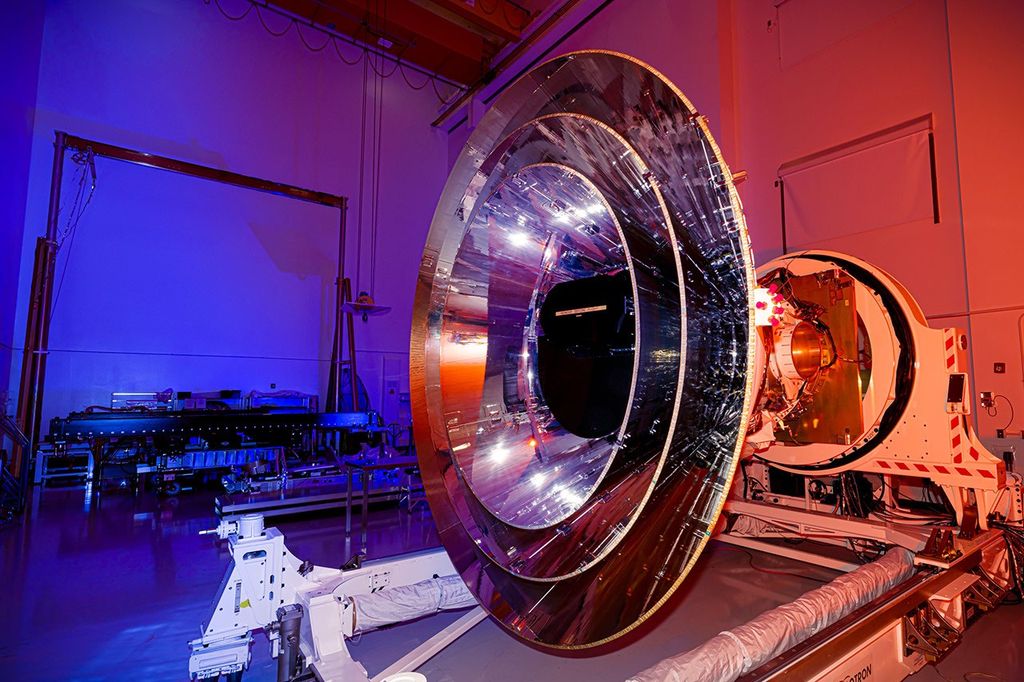1 min read
Light Echo Expanding from Exploded Star
A gush of light unleashed by the explosive death of a star is the gift that keeps on giving.
The dead star is no longer visible, but the light emitted by the stellar blast, called a supernova, is still reverberating through space three years after the star's demise was discovered.
A new movie assembled from images taken by NASA's Hubble Space Telescope, reveals an expanding shell of light from the explosion — a phenomenon called a "light echo" — sweeping through interstellar space. The "echoing" light looks like a ripple expanding on a pond. The time-lapse movie covers more than two years' worth of Hubble observations.
The light echo is caused by light scattering off interstellar dust clouds and nicely illustrates that space between stars is not a totally empty void.
The scattered light from the stellar blast travels different distances to arrive at Earth. Some light comes to Earth directly from the supernova blast. Other light is delayed because it travels indirectly. In this case, the light is bouncing off a huge dust cloud that extends 300 to 1,600 light-years around the supernova and is being reflected toward Earth.
The stellar explosion, called SN 2014J, occurred in the nearby starburst galaxy M82, or Cigar galaxy, 11.4 million light-years away. So far, astronomers have spotted only 15 light echoes around supernovae outside our Milky Way galaxy. Light echo detections from supernovae are rarely seen because they must be nearby for a telescope to resolve them.
SN 2014J is classified as a Type Ia supernova and is the closest such blast in at least four decades. Therefore, the Hubble observations of the stellar blast's light echo are the most detailed images of a Type Ia supernova. These stars explode in binary systems composed of a burned-out white dwarf star and a companion star. The companion spills material onto the white dwarf. Eventually, an explosion may be triggered when the white dwarf can no longer support the extra pressure of the accumulated matter. The details of this process are still the subject of ongoing research.
The supernova was discovered on Jan. 21, 2014. Hubble's Advanced Camera for Surveys snapped images over six epochs, from Nov. 6, 2014 to April 28, 2017.
The science team members are Y. Yang of Texas A&M University, College Station, and the Weizmann Institute of Science, Rehovot, Israel; P.J. Brown of Texas A&M University, College Station; L. Wang of Texas A&M University, College Station, and Purple Mountain Observatory, China; D. Baade, A. Cikota, F. Patat, and J. Spyromilio of the European Organization for Astronomical Research in the Southern Hemisphere, Garching, Germany; M. Cracraft and W.B. Sparks of the Space Telescope Science Institute, Baltimore, Maryland; P.A. Hoflich of Florida State University, Tallahassee; J. Maund and H.F. Stevance of the University of Sheffield, U.K.; X. Wang of Tsinghua University, Beijing Shi; and J.C. Wheeler of the University of Texas at Austin.
- Release DateNovember 9, 2017
- Science ReleaseHubble Shows Light Echo Expanding from Exploded Star
- Credit
Related Images & Videos

Light Echo around SN 2014J in M82
Hubble Spots Expanding Light Echo around Supernova Light from a supernova explosion in the nearby starburst galaxy M82 is reverberating off a huge dust cloud in interstellar space. The supernova, called SN 2014J, occurred at the upper right of M82, and is marked by an “X.” The...

Zooming in on a Light Echo
This video sequence takes the viewer into the nearby starburst galaxy M82, where a shell of light surrounding an exploding star is moving through interstellar space. The light was emitted from supernova SN 2014J, which was first observed in January 2014. Nearly three years...

Zooming in on a Light Echo (Narrated)
This video sequence takes the viewer into the nearby starburst galaxy M82, where a shell of light surrounding an exploding star is moving through interstellar space. The light was emitted from supernova SN 2014J, which was first observed in January 2014. Nearly three years...

Zooming in on a Light Echo (Annotated)
This video sequence takes the viewer into the nearby starburst galaxy M82, where a shell of light surrounding an exploding star is moving through interstellar space. The light was emitted from supernova SN 2014J, which was first observed in January 2014. Nearly three years...

Light Echo Expanding from Exploded Star (Black-and-White)
A gush of light unleashed by the explosive death of a star is the gift that keeps on giving. The dead star is no longer visible, but the light emitted by the stellar blast, called a supernova, is still reverberating through space three years after the star’s demise was...
Share
Details
Claire Andreoli
NASA’s Goddard Space Flight Center
Greenbelt, Maryland
claire.andreoli@nasa.gov






